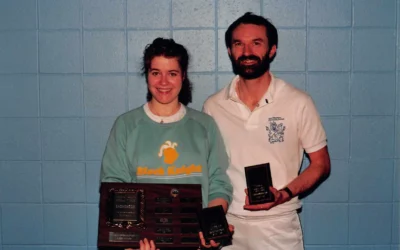Science has long been called an “ivory tower,” a discipline that you either have the knack for or don’t. With myriad concepts and terminology coming with the territory, the world of science can seem intimidating. But with technology rapidly changing the world around us, society can no longer afford to misunderstand scientific breakthroughs. Science communication, though often overlooked, has a bigger importance than ever before, with benefits apparent for both the community and researchers.
Climate change is the perfect example of miscommunication between researchers and the public, with information being spread that can confuse or be misinterpreted by the public. The result is apathy and inaction around one of the most pressing issues facing society today. But while clear communication has obvious benefits for the public, what many people may not realize is that it can have a profound effect on researchers as well.
A study at the University of California, Berkeley, in 2014 showed that 47 per cent of PhD students showed signs of depression, which many of them attributed to academic disengagement. As researchers begin to specialize in their fields, they often tackle highly technical problems that can be abstract in nature. Combined with research objectives that are not always clear, they can have difficulty explaining their research to others, especially those who don’t have a science background.
Paul Zehr, a science communicator and professor at the University of Victoria (UVic), explains that this experience can be lonely and isolating for researchers, making them question their experiments and ask themselves whether their work is really worthwhile.
“Everything is so siloed (in science) nowadays,” he says. “It’s hard enough for scientists to talk with other scientists, nevermind other people.”
Zehr has found a lot of success as a science communicator at UVic, using popular culture as a jumping-off point when explaining his own research. With a background in kinesiology and neuroscience, he wanted to be able to explain details about how the body is designed and the effects training can have, in a way that the average person would understand and relate to.
Having grown up with comic books, he decided to use Batman as an example of optimal body performance. In his first book, Becoming Batman, he uses his research to determine if it would be possible for a real person to develop the kind of body that Batman has. Zehr then went on to write a series of related books, including Project Superhero, and Inventing Iron Man, using comic books as a way to connect with his audience and humanize the more complex aspects of his research about the human body.
“We can leverage the accessibility of icons in popular media to help tell our science. This has allowed me to reach a much larger and diverse audience than if I had stuck just with straight up science,” he says.
Learning how to explain their research gives scientists a stronger sense of their contribution to their fields and the public. When audience members can understand the practical applications of research, they are more likely to advocate for additional information, which means more funding and grant opportunities for researchers.
UVic is developing programs that are devoted to improving and teaching science communication, but Zehr says he understands these programs are “the exception and not the rule.” Ideally, he adds, he would like to see more universities integrate communication courses into academic programs to help students succeed in their careers
following graduation. Matthew Pyper, owner of Fuse Consulting, agrees with Zehr, saying that science communication needs to start with students if it’s to have a significant impact.
“As a student, you don’t really have access to resources or courses that teach you how to communicate your science,” Pyper says. “It’s so important for us to give graduate students and undergraduate students better exposure and better training in the field of science communication.”
“When you’re a student, you just have so much more ability to stay focused on a task and teach yourself something new. They’re at such an influential point in their lives.”
Though still few in number, science communication programs are popping up to help scientists reach the public in a compelling way. Laurentian University in Ontario has started an entire graduate program on the topic, the first of its kind in Canada.
Closer to home, MacEwan University hosted biologist and writer Britt Wray as a speaker at last month’s LitFest, Edmonton’s annual festival celebrating nonfiction literature. There, she discussed her ideas about communication and public engagement in the sciences.
Through his work at Fuse, Pyper says he has learned a lot about the way the public absorbs information about science, and there are a few ways that researchers can get their points across effectively.
One of the ways scientists can do this is by recognizing the limitation of the audience. Though science tries to remain objective in its methodology, both Zehr and Pyper say there is an emotional aspect to effective communication that scientists should tap into.
“There’s a really strong emotional side to science communication, and the more we can connect with our readers’ emotions, the better chance that they’re going to appreciate that science and apply it in their life,” Pyper says.
With so many disciplines playing different roles in society, there’s also no way for an individual to do in-depth research about every topic on their own.
“Everybody who we’re trying to reach … all of these people are time limited. We need to find ways that we can get science in their hands so that it’s really accessible, and that it recognizes that they don’t have time to find a scientific paper and then read through 10 pages,” says Pyper.
For anyone looking to improve their knowledge of scientific research, Pyper suggests two small changes: becoming more curious, and finding an amiable science writer to follow.
In the end, bridging the gap in science communication is a shared responsibility.
“You can present (something), you can show them things, but the actual learning is an active part,” says Zehr.





0 Comments